This post describes a project that follows the Energy… Part 2 unit. If you haven’t read about that (new!) unit yet, this post will probably be confusing. This project was created in collaboration with Allie Boyd at the Energy & Equity summer workshop (link takes you to the portal; find the current workshop info through links on that page).
Project Description and Overview
In this project, students create representations to tell an energy story that is personal to them. They can choose from two prompts:
Tell the story of how you get to/from school.
Tell the story of how you cook a favorite meal.
There is also a secret third prompt. If a student walks to school and hates cooking, they can tell the story of how they charge their phone. About one student per section needed this option. I only let students know about this option on an individual basis if it was clear they were lost for a topic.
They are supposed to create something that can be displayed on a bulletin board. (I intentionally left this ambiguous to leave a wide space for creativity.) Their display, at minimum, needs to include 4 items: an energy tracking diagram, a sociopolitical system schema, and a written description of each of those diagrams. (For more info on those diagrams, check out my previous post.)
When turning in the project, students also need to complete a “process document”. This is a reflection that is shared with me, not put up publicly. I got this idea from humanities teachers at my school, and I’ve been using it for every project in my classes for several years now. It’s one of my favorite things to read, and it always adds a LOT more to my understanding of the work each student did. Often, even the smallest choices in their work carry a lot of intention, and many times I would not have known how thoughtful a design was without this additional document. I can’t recommend it enough if you aren’t already doing something like this for your own projects. (Maybe this is an obvious thing to do, but it wasn’t obvious to me without seeing the work students were doing in their humanities classes at my current school.)
When assigning the project, I use Google Classroom to organize everything. I give them view access to the Project Info Sheet, and I have it create a copy for each student of the Process Document for the project. You can access each Google Doc through these links and by clicking on the images of the first pages from each below.
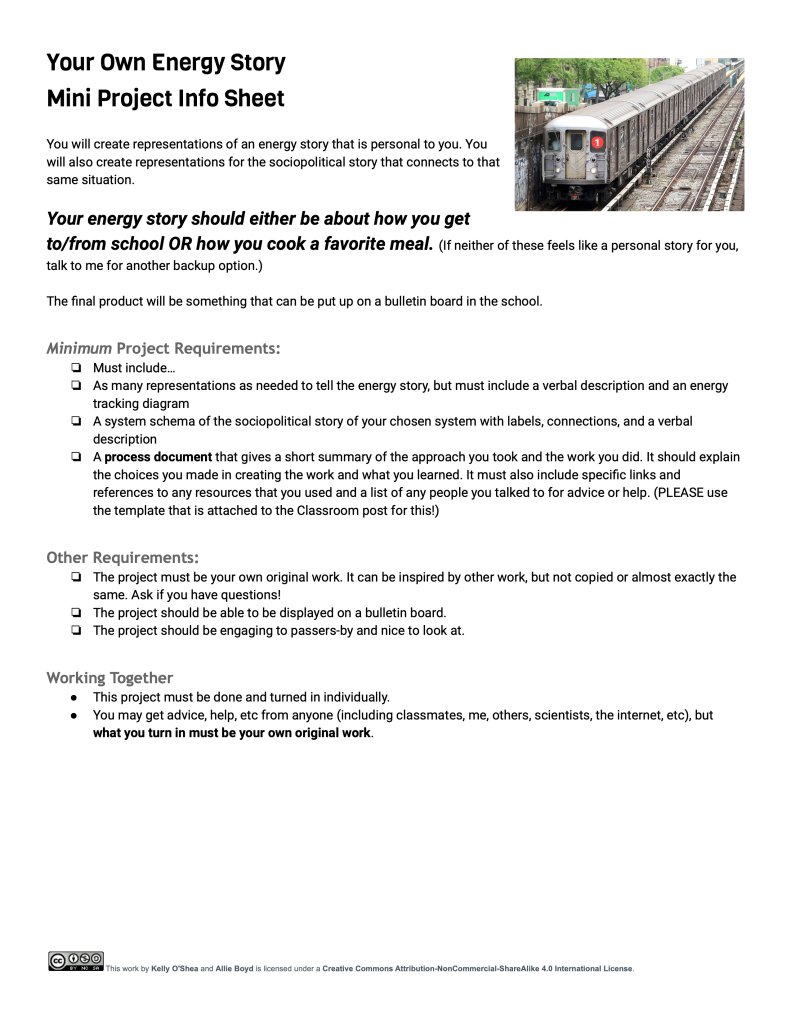
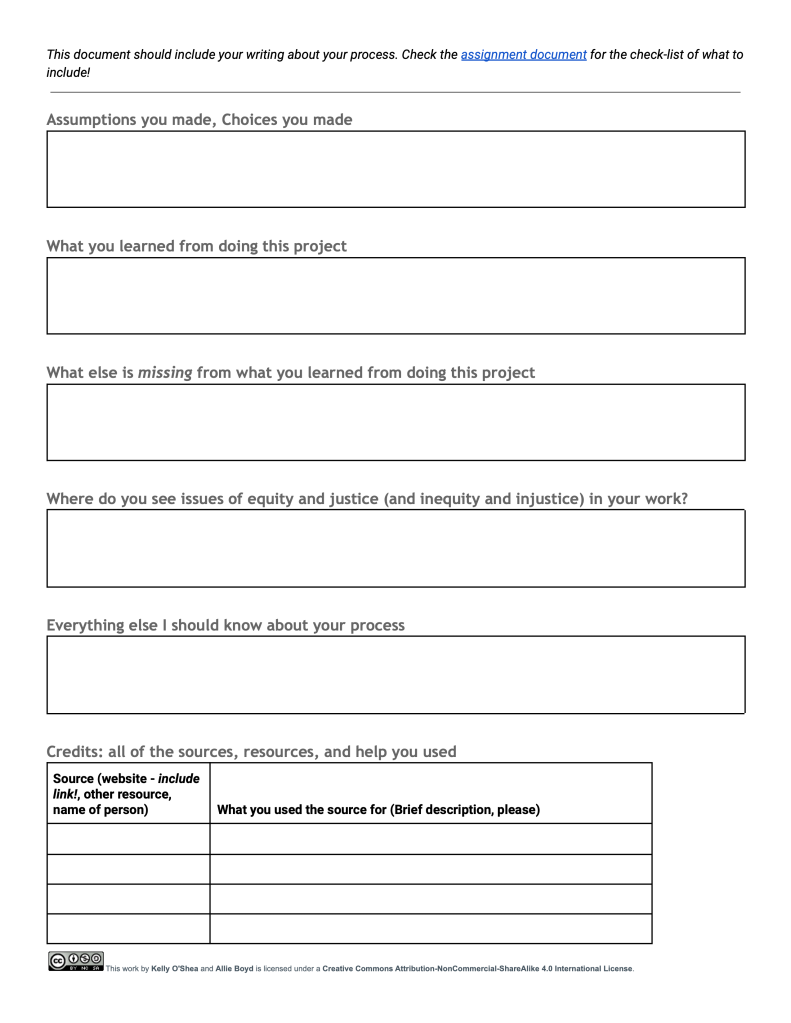
To submit the project, students need to turn in both digital and physical items. Digitally, they need to turn in the process document and clear, legible photos of their physical items. (If they created the diagrams and descriptions digitally, they can turn in those files directly.) They add each of those items to the Google Classroom post. Physically, they need to turn in their submission for the bulletin board, which needs to include at least the two diagrams and two written descriptions mentioned above.
Process and Timing
There was about a week between when I introduced the project and when they turned in their work.
Here are some more specifics to give you a sense of the timeline: My classes meet for 65 minutes, 3 times per week. They were expected to do most of the work outside of class, but some time was given in class on two of the days.
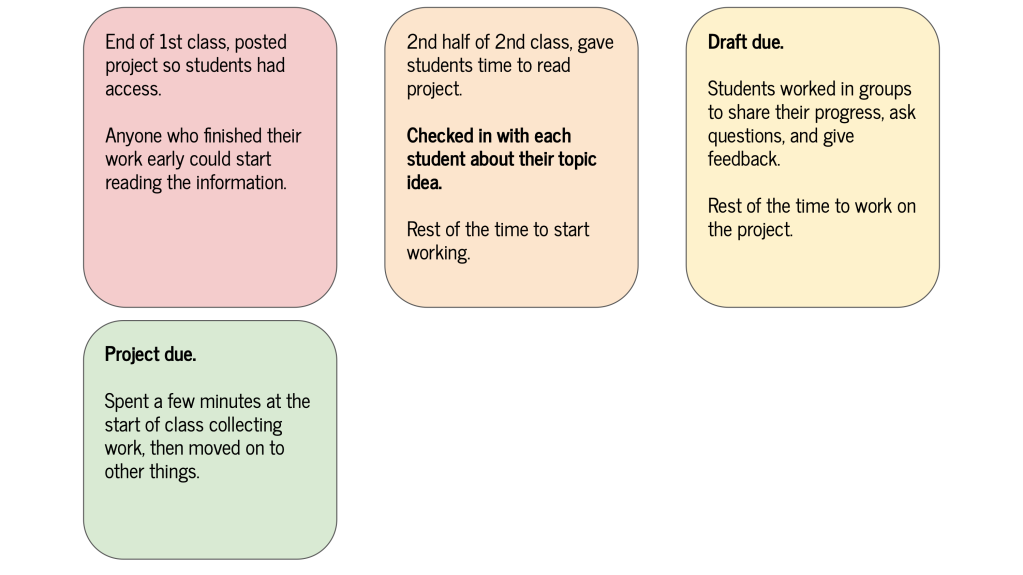
On the day that they started working on the project during class, everyone had time to read the info sheet, and everyone had to check in with me about their idea for the project. Most students immediately had an idea for what to do, and few of them changed their ideas. I just walked around and casually checked in with each kid very briefly. If I had concerns about their idea (which was rare), I asked them a couple of questions. In one section, I had to miss this class period because of another school event, so I left them a very short Google Form to fill out instead. Both ways worked well. Since they had the sense of their topic being “approved”, they knew to check in with me if they were changing it.
After introducing the project, students brought drafts of their work to the next class period. I had them work in large groups to share what they had so far. Here’s the information I posted for them to guide those conversations:

And here are a few photos of them giving each other feedback on their work.


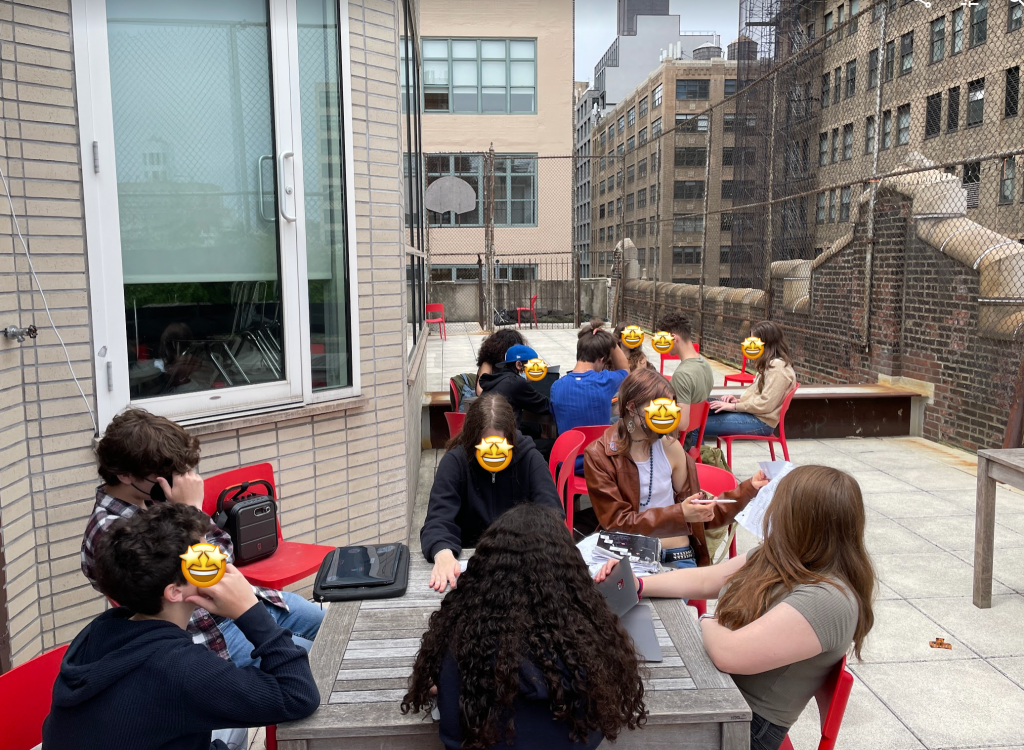
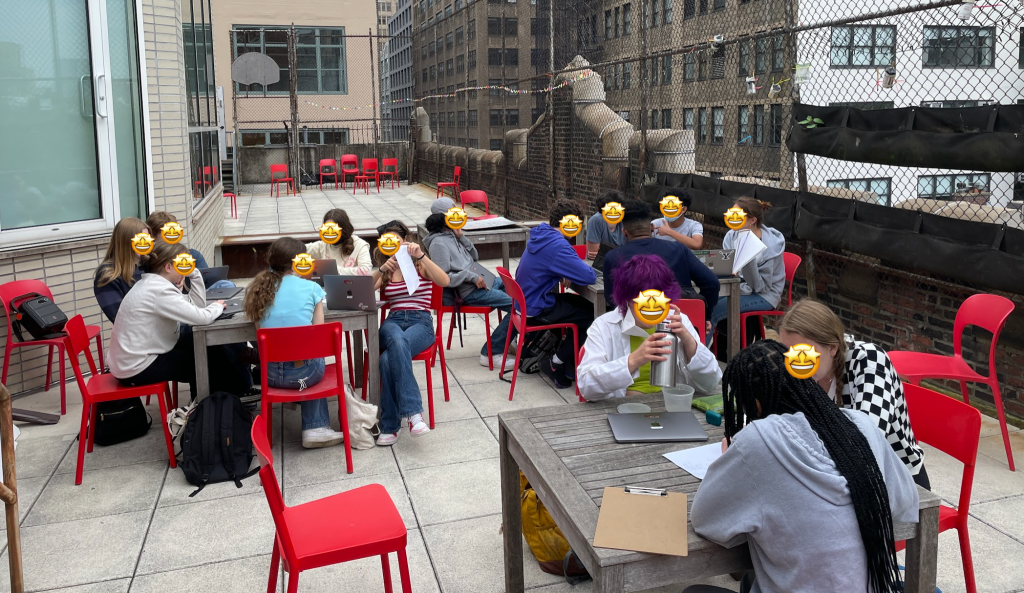


They really did take it seriously, and many students found the feedback that they received helpful. At least one student even wrote in their reflection that they would have appreciated having a second draft day just like this one before turning in the project.
Since there was a weekend between this day and when the project was due—and because it wasn’t possible for me to give every student my full attention during the work time after they finished with their groups—I let them know that they could upload their drafts and leave a comment on Classroom for me if they wanted me to look at what they had. (Probably 2-3 total students across both classes took me up on that.)
Because of the nature of the end of the year, and especially at the end of this sometimes-chaotic year, I’ve saved their work to put up right when they return to school, when I will be able to get some additional bulletin board space to display it.
Student Work
I was really impressed by and delighted with what the students learned and produced for this short project. And also, after this first try with it, I have a lot of ideas of little bits of additional structure that might help more students take their work to the next level this coming school year. (More on that in a minute.)
In both of my 10th-grade classes, most students chose to tell the story of a favorite meal. A handful used their commute to school. One in each section used the phone charging option.
I’m allowed to share student work here as long as I remove the names, so there is a gallery below with a few of the projects. (Keep in mind that these are 10th graders, it was my first time doing this project, and there’s always room for improvement. I hope you find these as captivating as I do.)
🚨🚨🚨 Note to current students finding this blog post while working on this project🚨🚨🚨: These are not perfect. Look at them as “zoomed out” examples rather than trying to take specific details from them. Find some things you disagree with in them and some things you like about them, and come talk to me about your ideas. 🥰




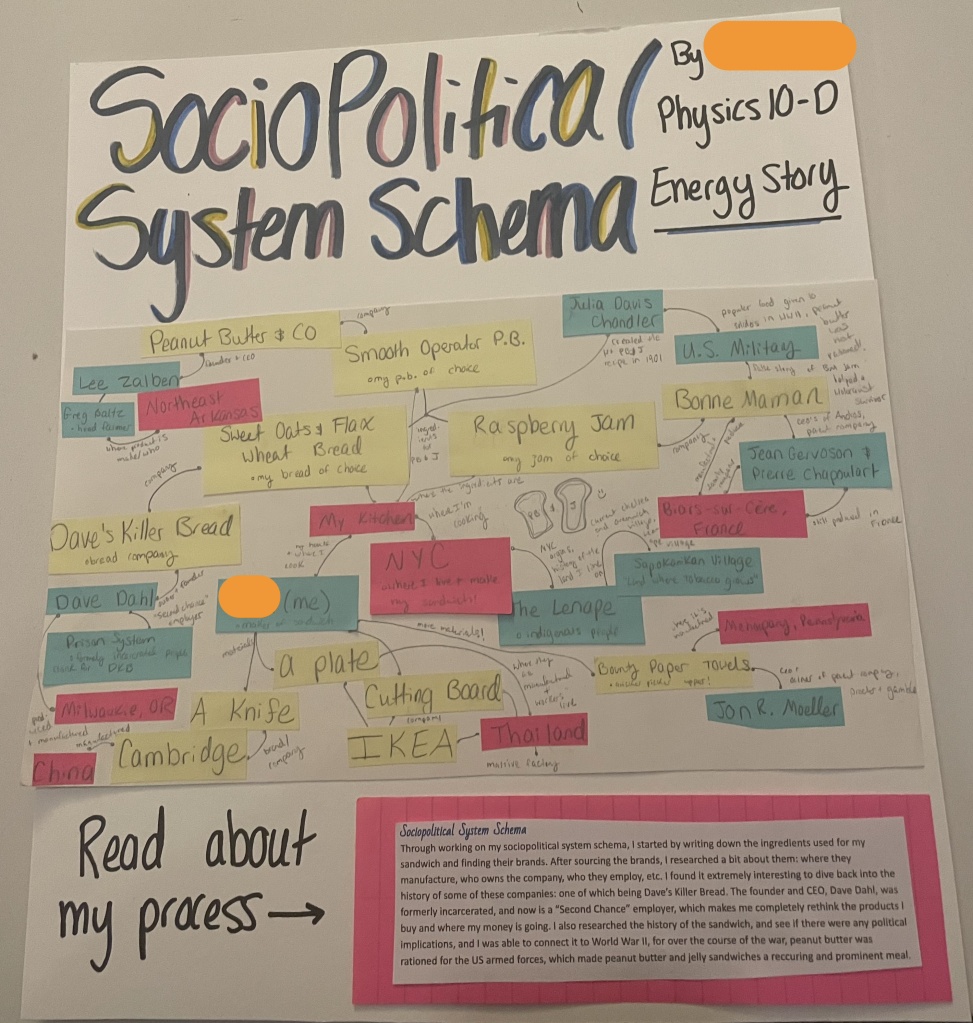

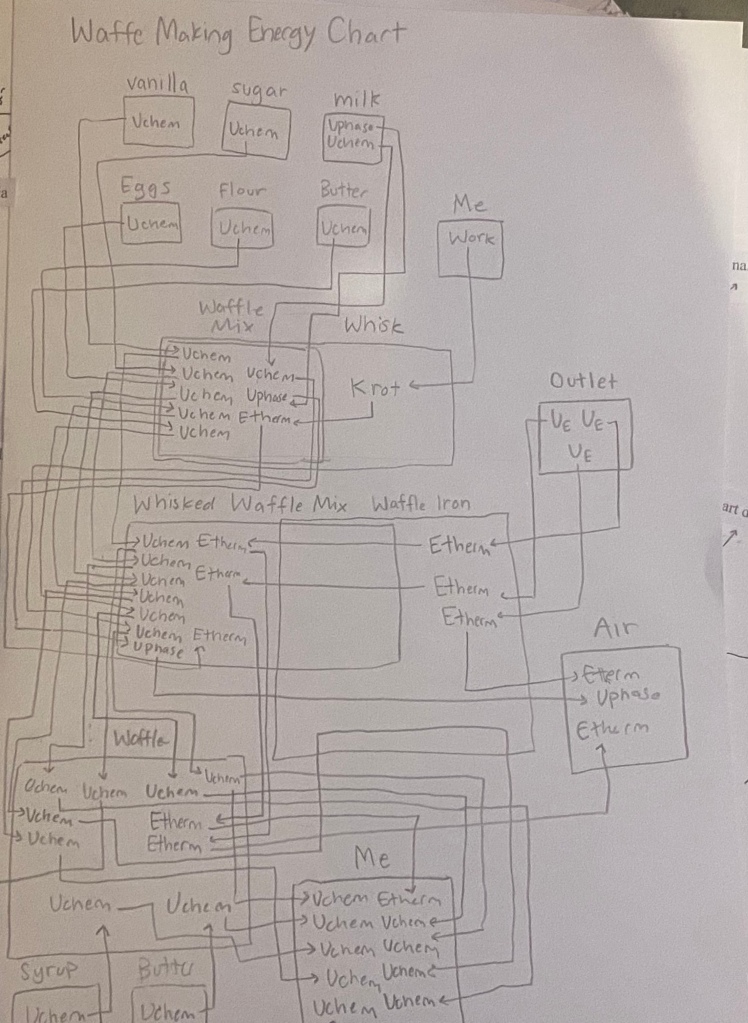
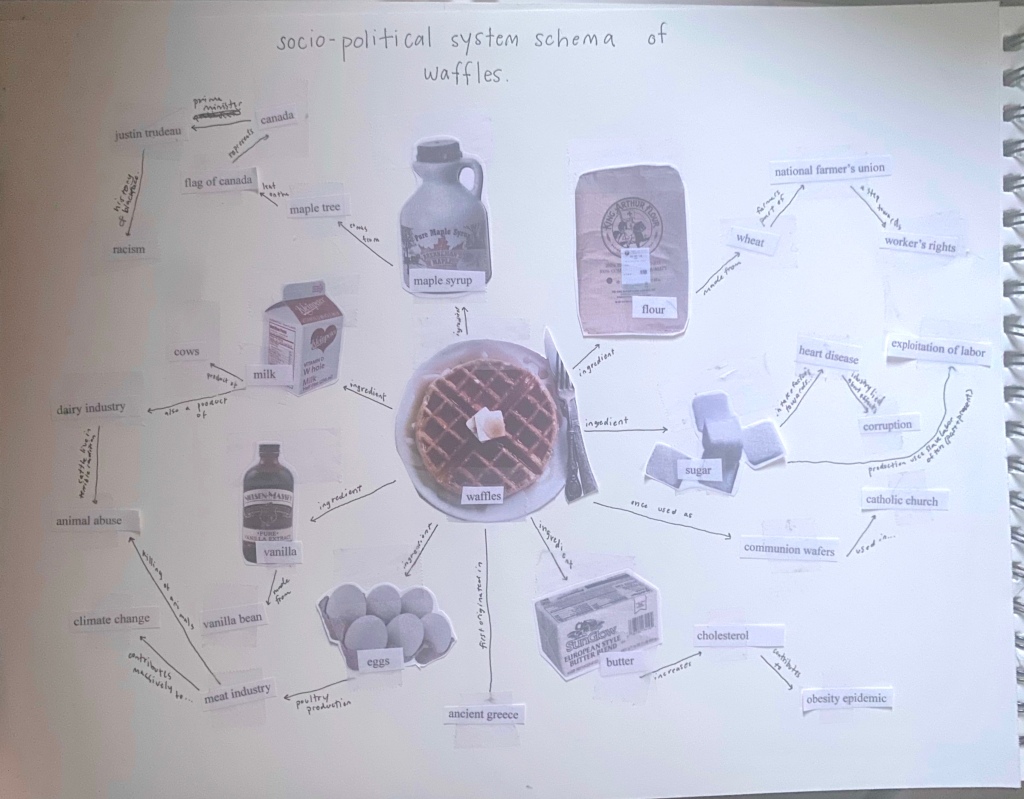
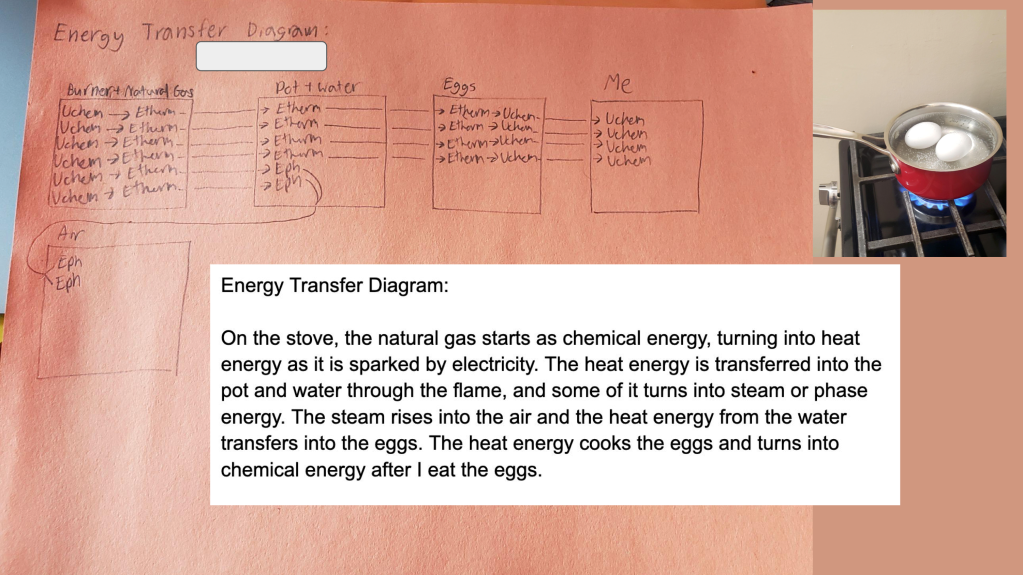



These images represent just a small sample of the work that kids did, and they show a range of developing understanding. But more importantly, you can see the thoughtfulness and effort, even while some parts are quite imperfect—and the different ways their thinking branches off even when working on similar topics.
At the start of the project, many students tried to pick a “simple” topic. They quickly realized that even the simplest topic, like boiling eggs, was really complex—and it didn’t really matter what they chose to focus on.
Some students looked carefully at the process document (see above) before starting, and got caught on the idea of being able to answer “Where do you see issues of equity and justice (and inequity and injustice) in your work?“—how could there be issues of equity and justice when you’re making a smoothie? I asked them to trust the process for a day or two, and they quickly discovered how their meal or commute was connected to topics like fracking, worker conditions, the prison system, environmental racism, the war in Ukraine, etc etc etc.
Here is some sample student work for the process document. I haven’t included the list of sources for them, but those are also wonderful. They often credit specific classmates and family members. One student had a full two pages of sources. (That’s unusual, but connected to that student’s love of research for sure!)



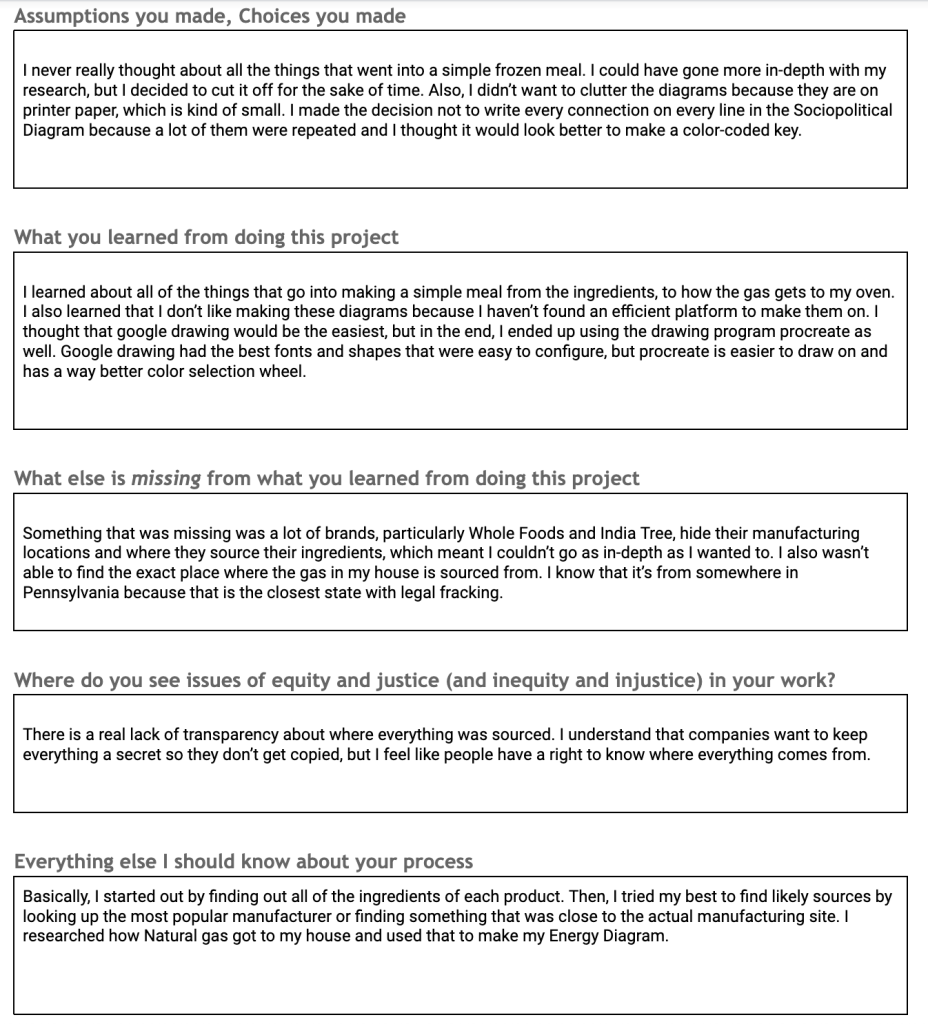
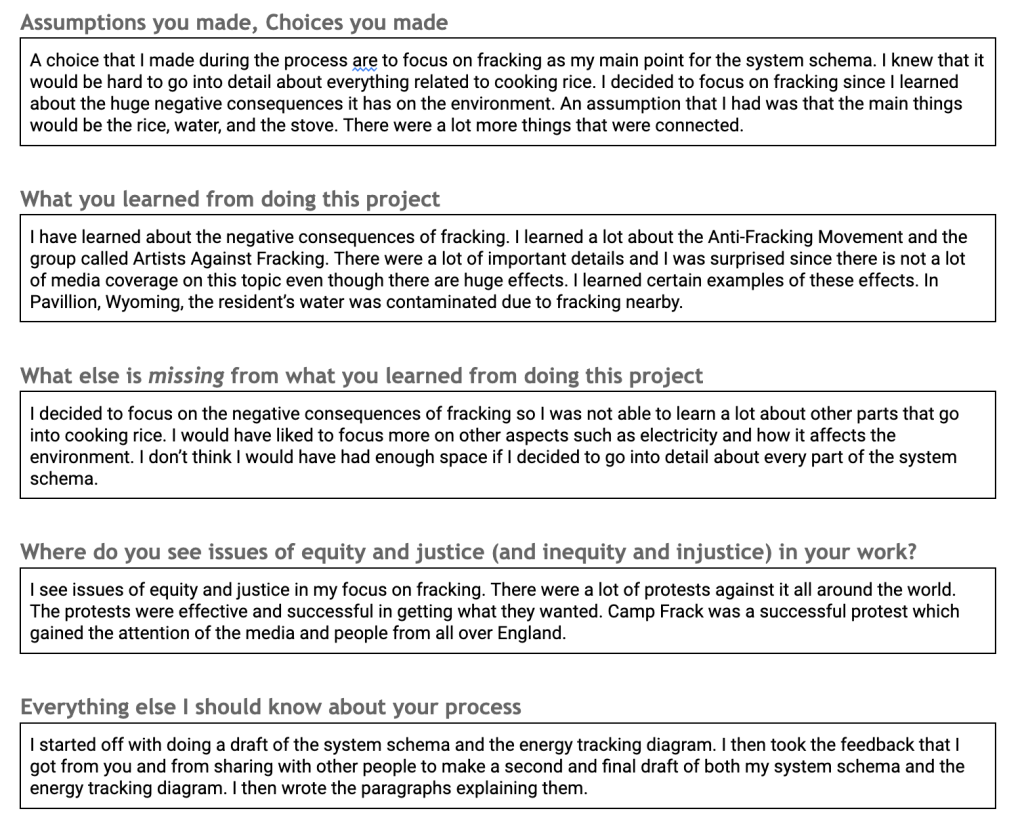
Next Steps
I will definitely do this unit and project again in the coming school year. There are some clear places where a little more structure or support could make a difference, and I will focus on those edits next spring.
I want to make sure to put more time and emphasis on labeling the process arrows in the energy tracking diagrams. Students who didn’t do this were much more likely to make unrealistic diagrams (like showing phase energy ending up as kinetic energy—or showing Etherm ending up as Uchem in a person or in food), and having to label the process by which that transfer happens would hopefully prompt them to at least ask some more questions.
The student feedback about the unit and project were overall really positive, and they also identified some things that would help—examples of previous projects (which they of course realized didn’t yet exist for them), having just a little more time for the project. and having a second draft feedback process with classmates. In the second draft, I would want them to specifically look for how the energy story comes into focus in the system schema, whether they have traced the energy story back far enough in their tracking diagram, and whether they have focused mostly on CEOs or if they’ve asked questions about the many different groups of people involved and affected by each item in their schema.
After the first section got started, I realized I had made a mistake in not being careful enough about a meal needing to involve cooking. (See the PB&J project above—which the student also realized and brought up, but I didn’t want them to have to start over because of my mistake.)
If anyone else uses this unit or project, I’d love to hear about it! I’d especially love to hear the changes and improvements you make along the way.
And if you are a high school teacher reading this post shortly after it is published, know that the workshop where Allie and I developed this project is being held again this summer—and I believe there are still spaces remaining to join it. The workshop is held virtually, and you get a stipend for attending. Click the image below for the info!
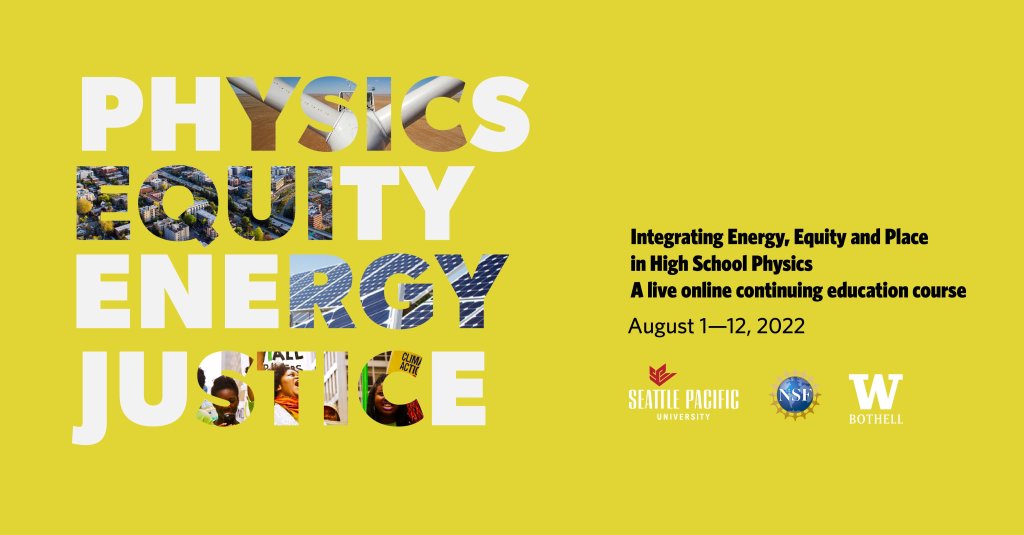


[…] stories (along with entwined associated sociopolitical stories) that are personal to them. I will write about the project in detail in a separate post. This post gives details about the […]